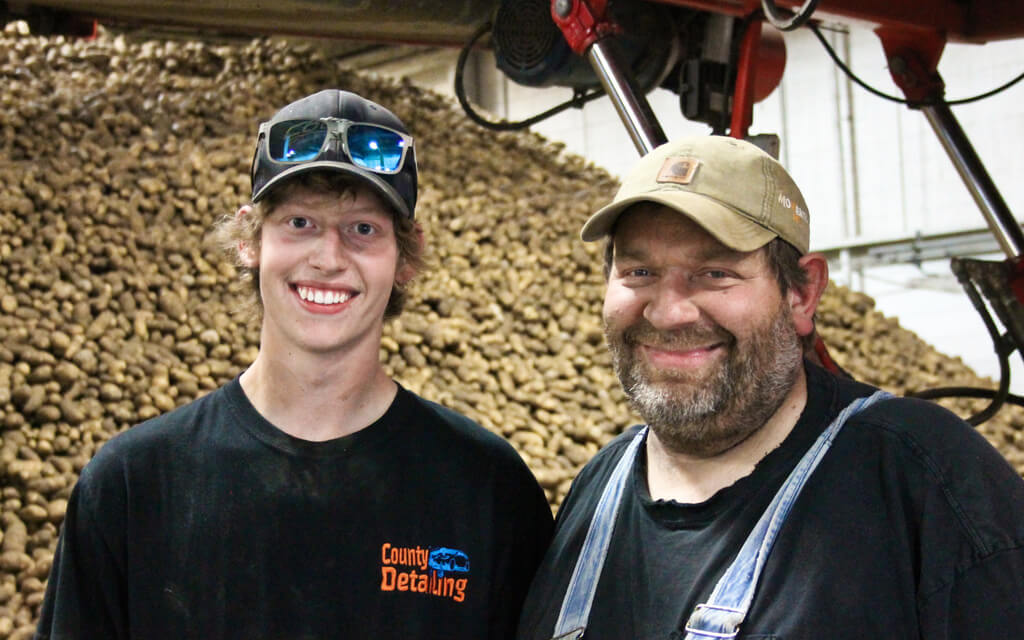Aroostook County may have pulled a record potato harvest out of the ground this year, but transportation slowdowns and a driver shortage are making it difficult to get the crop to market.
Perfect weather during the growing season boosted yield by about 20 percent for The County’s staple crop. Some farmers simply ran out of room, so the Loring Development Authority offered former military buildings for potato storage.
With the surprisingly bountiful harvest, the supply is there to meet demand from french fry makers and grocery shoppers, and the potatoes are holding up well. But supply chain delays, fuel costs and lack of transportation workers could mean growers will get less money for their product.
“The real problem is no trucks to haul containers. That means prices go up for the transportation, prices go up to our consumers for the goods, and we end up selling for less,” Brian Guerrette of Guerrette Farms in Caribou said Friday.
Guerrette estimated movement of goods overall is down about 10 to 15 percent. And it matters what side of the supply chain you’re on. An owner of the goods — like a farmer — is at the bottom, he said, and is at the mercy of those higher up the chain who set prices and get the goods where they need to go.
“Most of the raw and finished product that moves out of Aroostook County moves out of here by truck,” Don Flannery, executive director of the Maine Potato Board in Presque Isle, said Friday. “Trucks have been a challenge, but they’re even more of a challenge now.”

Nationwide, the trucking industry is short 80,000 drivers, according to American Trucker, a situation exacerbated by the pandemic. It’s a shortage Flannery said he believes will be around for a while.
“You can’t make somebody be a truck driver,” he said.
Flannery said that transport by rail might be an answer to part of the problem — but likely not for perishable products like potatoes. And, he said, the rising cost of fuel affects trucks and drivers and will filter down to consumers.
But there is good news. The 2021 growing season produced a record yield of 345 hundredweight per acre, up from 265 per acre last year. Maine’s potato acreage, which dipped in 2020 due to COVID-related market drops, increased by 8,000 acres this year.
It’s a quality crop, Flannery said, and with Maine in close proximity to markets like Boston, New York and Philadelphia, transportation from Maine to those markets might be a lot easier than transporting from areas farther away.
“The acres are back up this year, and I think that demand is going to continue,” he said. “It’s a matter of them figuring out logistically how to get it to where it’s needed.”

Guerrette Farms is still storing some potatoes in maintenance buildings at the Loring site. Guerrette said his operation is fully staffed and the potatoes look “great.” They have transported about half of what they had stored at Loring, and are using those first before moving product from their own storage.
He is grateful the Loring Development Authority stepped in to offer space. “Those Loring people bent over backward,” he said. “They didn’t need to do it, but they wanted to. It was a real service to the growers to allow that.”
Despite the transportation roadblocks, Guerrette said he believes things will even out eventually. “People will eat, and people love potatoes.”


